Introduction: Uber vs Lyft - Which One Deserves Your Hustle?
If you’re thinking about driving to earn some extra cash, Uber and Lyft are probably the first two names on your radar. And for good reason both platforms offer flexible schedules, quick payouts, and the ability to start earning with just your car and a smartphone.
But while they may look similar on the surface, driving for Uber vs. Lyft can feel very different once you’re behind the wheel. From pay structure and driver support to passenger experience and market reach, your choice can directly impact how much you make and how smooth your daily grind is.
So which one’s the better side hustle in 2025?
This guide breaks it down across the key areas that matter most to drivers so you can make a smart, informed decision that fits your lifestyle and financial goals.
Key Takeaways
What You’ll Learn: Uber vs Lyft Comparison
- Uber and Lyft both offer flexible schedules and strong daily earning potential.
- Uber typically provides more ride requests due to its larger market reach.
- Lyft drivers often receive better tips and report higher satisfaction.
- Both platforms offer bonuses, but Lyft may reward short-term effort more aggressively.
- Your ideal choice depends on where you drive, how often, and how much interaction you want with passengers.
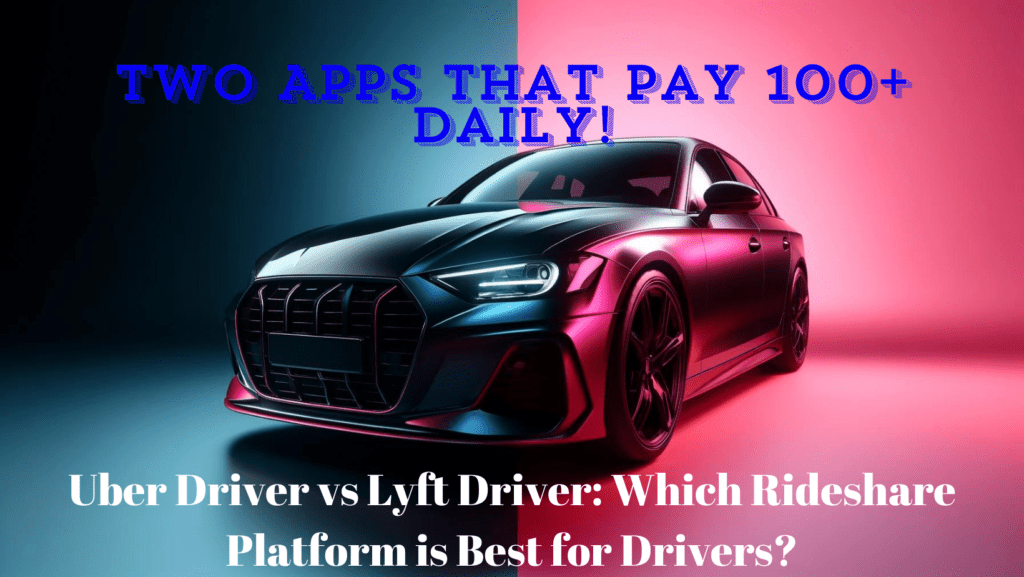
💰 Earnings Potential: How Much Can You Actually Make?
One of the first questions every new driver asks is simple: Who pays more Uber or Lyft? The answer depends on several factors like your city, the time of day you drive, rider demand, and how well you take advantage of bonuses.
Uber typically has a larger rider base, especially in bigger cities. That often translates into more ride requests and shorter wait times between trips. Drivers are paid based on a per-mile and per-minute formula, with rates varying by region. Uber also includes:
- Surge pricing during peak hours
- In-app tipping from passengers
- Quests and bonuses for completing a certain number of rides
Because of its scale, Uber tends to offer more consistent earnings, especially for drivers who stay active during high-demand windows.
Lyft pays using a similar formula, per mile and per minute with variations depending on your city. Where Lyft stands out is in its tipping culture and frequent driver bonuses. Many drivers report:
- Higher tip frequency from Lyft passengers
- Regular challenges (e.g., “Complete 30 rides this weekend and earn $100”)
- Power Driver Bonuses for hitting ride thresholds
In certain markets, Lyft drivers can out-earn Uber drivers on a per-ride basis, especially when tips and bonuses are factored in.
- Drive with Uber if you want more ride volume and steadier payouts.
- Drive with Lyft if you value strong tips and frequent bonus incentives.
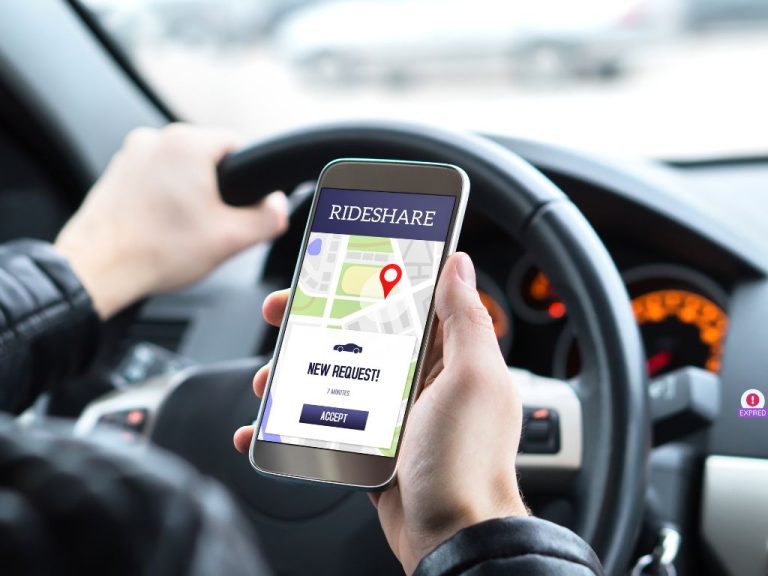
🎯 Bonuses & Incentives: Who Rewards Drivers More?
Both Uber and Lyft offer extra cash opportunities beyond regular fares but their approach to bonuses is slightly different. Whether you’re a new driver or hitting the road during peak hours, these incentives can seriously boost your earnings.
Uber
Uber’s incentive structure focuses on performance-based rewards. The most common include:
- Surge Pricing: Higher rates during busy times or in high-demand areas.
- Quests: Complete a set number of rides in a certain time frame for a cash bonus.
- Boost Zones: Drive in designated areas for extra per-trip earnings.
Uber also frequently rolls out guaranteed earnings for new drivers, offering a lump sum if you complete a certain number of trips within your first few weeks.
Lyft
Lyft is known for offering more frequent, aggressive bonus campaigns, especially for part-time or weekend drivers. Common incentives include:
- Streak Bonuses: Earn extra for completing consecutive rides within peak windows.
- Challenges: Hit ride goals (e.g., 50 rides this week) for a flat bonus.
- Personal Power Zones: Like Uber’s surge, but tailored based on your driving patterns.
- Weekly Guarantees: If you complete a set number of rides, Lyft guarantees a minimum payout even if your total earnings fall short.
Lyft’s incentive system can feel more attainable for casual drivers, while Uber’s rewards tend to favor those driving full-time or during high-demand hours.
- Uber offers strong bonus potential tied to peak times and high volume.
- Lyft wins for drivers who prefer consistent, achievable ride challenges and streak-based bonuses.
🕒 Driver Flexibility: Schedule Control and Work-Life Fit
Flexibility is one of the biggest reasons people choose rideshare driving in the first place. Whether you’re squeezing in a few hours between classes, covering bills on the weekend, or replacing a 9–5 altogether, both Uber and Lyft give you the power to choose when and how often you drive.
Uber
Uber offers true on-demand flexibility. There are no shift requirements, no minimum hours, and no limits on when or where you drive (as long as the app is active in that region). Key highlights:
- Start and stop whenever you want
- Pick up extra rides during commute hours, weekends, or holidays
- Drive in different cities or states (as long as you’re cleared in the region)
Uber also provides real-time demand notifications, helping you make smarter decisions about when to hit the road.
Lyft
Lyft also offers full scheduling freedom, but takes things a step further with targeted bonus windows. These encourage drivers to get on the road during specific hours when demand is high.
What sets Lyft apart:
Scheduled ride requests in advance (optional)
Bonus prompts for driving during “Power Hours”
Weekly driving summaries that help optimize your time
Lyft’s system can reward drivers who are strategic about when they drive, not just how much they drive.
Both platforms offer complete freedom over your schedule.
Uber is ideal for maximum spontaneity.
Lyft adds structure with bonus-driven windows that can help part-timers earn more in less time.
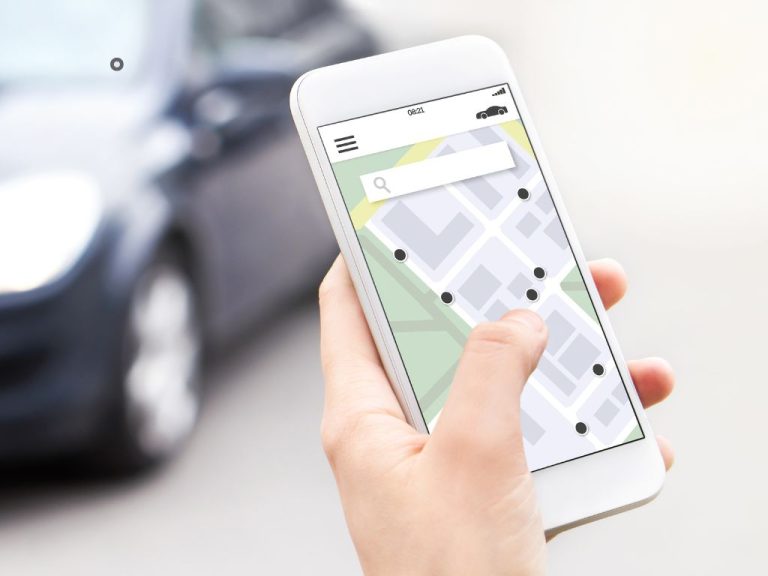
🙌 Driver Support and Community: Who Has Your Back?
Driving independently doesn’t mean you want to feel alone. When issues come up whether it’s a rider complaint, app glitch, or payment question—solid support can make or break your experience. And when it comes to feeling valued, community matters more than most drivers expect.
Uber
Uber provides 24/7 driver support through multiple channels:
- In-app messaging and help center
- Phone support (limited depending on region)
- In-person assistance via Uber Greenlight Hubs (available in select cities)
That said, some drivers report that support can feel inconsistent or automated, especially when dealing with disputes or deactivations. Larger scale = more systems, but sometimes slower resolution.
Lyft
Lyft puts more emphasis on driver satisfaction and personalized support. Here’s what stands out:
- 24/7 in-app and phone support
- Friendly tone and human-first approach in communications
- Dedicated local Lyft hubs that feel more like a community center than a corporate office
- Higher overall driver satisfaction scores in independent surveys
Lyft also offers features like in-app emergency support and clearer communication around deactivation policies, which can give drivers more confidence on the road.
- Uber has more resources and global infrastructure, but support quality varies.
- Lyft delivers a more driver-friendly experience with better satisfaction and community vibes.

👥 Passenger Experience: Transactional or Personal?
You might not think rider behavior matters much but if you’re driving for hours, the way passengers treat you can seriously impact how enjoyable (or stressful) your shifts feel.
Uber and Lyft attract slightly different rider types, and that difference shows up in the interactions drivers have on the road.
Uber
Uber tends to feel more transactional and efficiency-focused. Riders often treat the service like a quick, no-frills ride from point A to point B.
What drivers report:
- Less small talk, more silence (which some prefer)
- More rides with business travelers and commuters
- Fewer casual conversations
- Riders expect speed and professionalism over friendliness
This vibe is ideal for drivers who like to stay focused, keep interactions minimal, and move through rides quickly.
Lyft
Lyft has cultivated a friendlier, more casual atmosphere. The brand positions itself as the more personable rideshare option and many passengers respond to that tone.
What drivers notice:
More frequent conversations or light banter
A higher likelihood of receiving tips for good vibes
Passengers who tend to rate based on friendliness as well as service
For sociable drivers, this kind of interaction can make the day feel lighter and more enjoyable.
Drive with Uber if you prefer quiet, task-oriented rides.
Choose Lyft if you enjoy a more relaxed, people-friendly driving environment.

🌍 Market Coverage and Ride Demand: Where Can You Drive and Stay Busy?
No matter how good the pay or support is, none of it matters if you can’t get consistent rides. Platform availability and rider demand play a major role in how much time you spend driving vs. waiting for a ping.
Here’s how Uber and Lyft compare when it comes to reach, activity, and consistency.
Uber
Uber dominates in terms of global and regional coverage. As the largest rideshare company in the world, Uber is available in:
- Over 10,000 cities worldwide
- Most U.S. markets, from major metros to smaller suburbs
- Select international markets, making it ideal for travelers or drivers who relocate
This scale translates into:
- Shorter wait times between rides
- More surge pricing events in high-demand zones
- Consistent ride requests, especially in busy downtown areas or during rush hour
For drivers in rural or mid-size areas, Uber is often the only available option with enough ride volume to make it worthwhile.
Lyft
Lyft is focused on North America only, operating in:
- All 50 U.S. states
- Select cities in Canada
While its reach is more limited, Lyft often holds strong in urban areas where it’s built a loyal customer base. In cities like San Francisco, Seattle, Austin, and Denver, Lyft is as busy or busier than Uber.
However, in smaller markets or towns with fewer riders, ride availability may lag, and wait times can be longer.
- Uber is the better pick if you’re looking for more ride opportunities across more locations.
Lyft holds its own in major cities but has a narrower footprint and less coverage in rural or lower-density areas.

📱 App & Driver Tools: Who Makes It Easier to Drive Smart?
Your driving app is your command center. From finding passengers to tracking earnings, the smoother and smarter the platform, the better your experience behind the wheel. While both Uber and Lyft offer strong functionality, there are some key differences in how they support drivers on the road.
Uber
Uber’s app is robust, with more built-in features and real-time insights. Drivers benefit from:
- Live demand heat maps showing high-earning zones
- Easy access to earnings summaries and ride history
- Upfront pricing that shows total fare, route, and estimated earnings before you accept
- Route preferences, including trip direction filters
- Navigation integration with Google Maps or Waze
- Real-time in-app safety alerts
Uber’s app is built for scale and flexibility, making it especially valuable for drivers who want to optimize every hour on the road.
Lyft
Lyft’s app has a cleaner, more minimal design with an emphasis on simplicity and ease of use. Key features include:
- Personal Power Zones to highlight bonus areas
- Streak and challenge tracking in real time
- Scheduled pickups for drivers who like to plan ahead
- Clear earnings dashboards and quick summaries
- Strong in-app support and reporting tools
- Seamless navigation via built-in routing or third-party apps
Lyft’s interface feels more intuitive for many new drivers, with less clutter and a smoother learning curve.
- Uber’s app offers more power features for maximizing earnings and managing time.
- Lyft’s app shines with clean design and bonus integration, making it great for casual or part-time drivers.
💸 Expenses and Payouts: What Do You Keep After the Drive?
Making money is one thing but keeping it is another. Gas, wear and tear, and platform fees can chip away at your earnings if you’re not careful. Let’s break down what it really costs to drive for Uber vs Lyft and how each platform handles your payouts.
Platform Fees
Both Uber and Lyft take a service fee from each ride. These fees vary slightly depending on your location and the specifics of the trip, but here’s the general idea:
- Uber: Takes around 25% of the fare (this can vary by city and fare type)
- Lyft: Takes a similar commission, often in the 20–25% range
Keep in mind this is after the rider pays their full fare. What you see in your earnings screen is the amount after platform deductions.
Driving Expenses (Your Responsibility)
Regardless of platform, all drivers are responsible for their own:
- Gas (especially relevant with rising fuel costs)
- Vehicle maintenance (oil changes, tires, brakes)
- Insurance (personal and possibly rideshare-specific coverage)
- Self-employment taxes (including quarterly estimates if driving full-time)
These expenses can add up quickly, especially if you’re driving long hours or in traffic-heavy areas.
Payout Options
Getting paid is fast and easy on both platforms:
- Uber: Offers Instant Pay (up to 5x/day to your debit card) or weekly direct deposit
- Lyft: Also offers Express Pay (after every ride, if you choose), plus weekly deposits
Many drivers rely on daily payout options to access their earnings quickly useful for covering fuel or personal expenses in real time.
- Uber and Lyft take a similar cut of your fare.
- Your real profit depends on how you manage your driving expenses.
- Both apps offer fast, flexible payout options, making it easy to access your money when you need it.
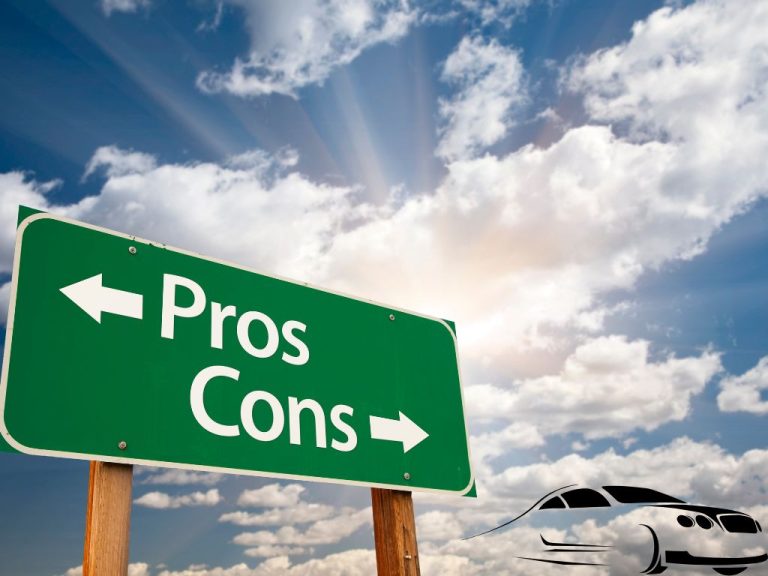
✅ Pros & Cons Recap: Uber vs. Lyft for Drivers
Here’s a side-by-side breakdown to help you quickly compare Uber and Lyft across the most important categories:
Uber – Pros
- More ride requests in most cities
- Global availability (drive almost anywhere)
- Surge pricing increases earnings during busy times
- Feature-rich app with powerful driving tools
- Strong for full-time or high-volume drivers
Uber – Cons
- Less personalized support
- Tipping culture may be weaker
- Heavier competition in crowded markets
Lyft – Pros
- Strong driver support and satisfaction
- Riders tend to tip more often and more generously
- Frequent bonus challenges and ride streak incentives
- Friendlier rider interactions for social drivers
- Clean, easy-to-use driver app
Lyft – Cons
- Only available in the U.S. and Canada
- Fewer ride requests in smaller cities
- Bonus structures may vary more by region
If you’re looking for volume, reach, and consistency, Uber is often the better bet. If you want community, tips, and a smoother day-to-day experience, Lyft may be a more rewarding ride.
🏁 Conclusion: So, Which Rideshare App Should You Drive For?
At the end of the day, both Uber and Lyft can help you earn real money on your own schedule. The better platform comes down to what you value most as a driver:
- Want more ride volume and broader city coverage? → Go with Uber.
- Prefer a supportive experience with better tips and driver incentives? → Try Lyft.
Some drivers stick to one platform. Others use both to maximize flexibility, bonuses, and earnings potential a smart strategy in high-demand areas.
Before choosing, consider your location, your availability, and how much you enjoy (or don’t enjoy) interacting with passengers.
Your ideal rideshare app isn’t just the one that pays the most, it’s the one that fits your lifestyle, pace, and personality.
Want more ideas beyond driving? Check out this guide to remote side hustles.
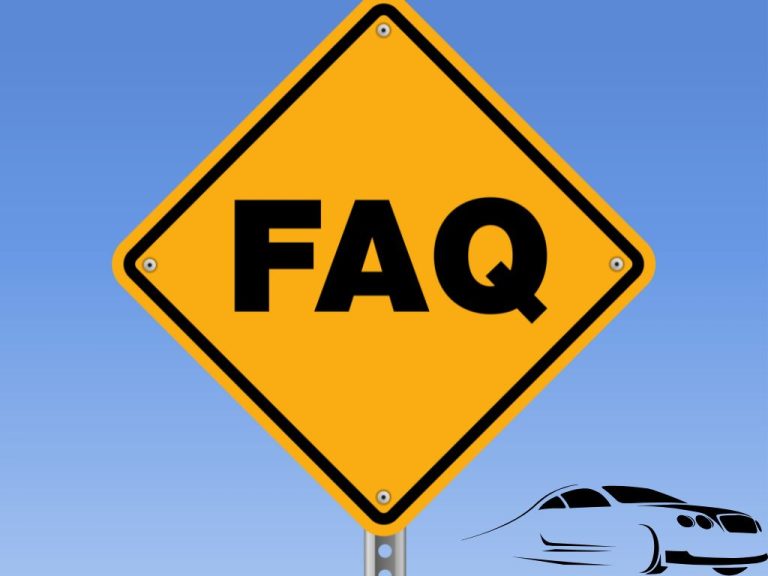
❓FAQs: Uber vs. Lyft for Drivers
Can I drive for both Uber and Lyft at the same time?
Yes. Many drivers use both apps to stay busy and switch between them based on demand, bonuses, or location. It’s a common strategy to maximize earnings.
Which platform is better for new drivers?
Lyft is often seen as more beginner-friendly, thanks to stronger support, clear bonus goals, and a more relaxed rider culture. Uber may offer more rides, but it can be more competitive.
Who takes a bigger cut Uber or Lyft?
Both take a similar service fee (typically around 20–25% of each fare), but actual take-home pay depends on ride type, tips, and local rates.
Do passengers tip more on Uber or Lyft?
Lyft generally has a more generous tipping culture. Many drivers report that Lyft passengers are more likely to leave a tip and tip higher amounts.
Is one platform safer than the other for drivers?
Both Uber and Lyft have built-in safety features like emergency help buttons, ride tracking, and anonymous number masking. Lyft tends to score slightly higher in driver satisfaction around safety and support.
Can I make $100 a day with Uber or Lyft?
Yes. Many drivers make $100–$200 per day depending on their city, hours driven, and ability to hit bonuses. Peak hours and location matter most.

